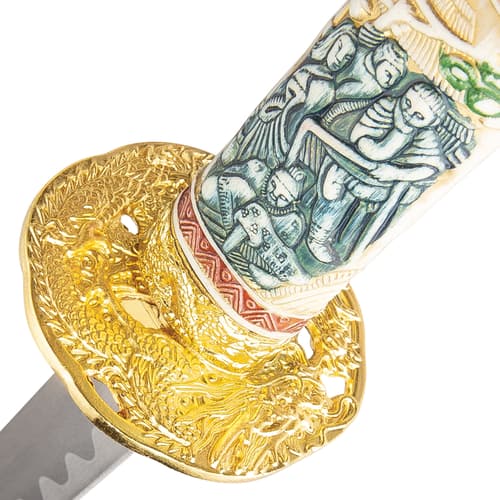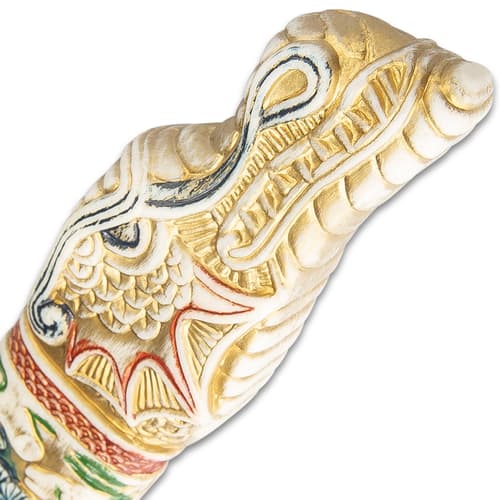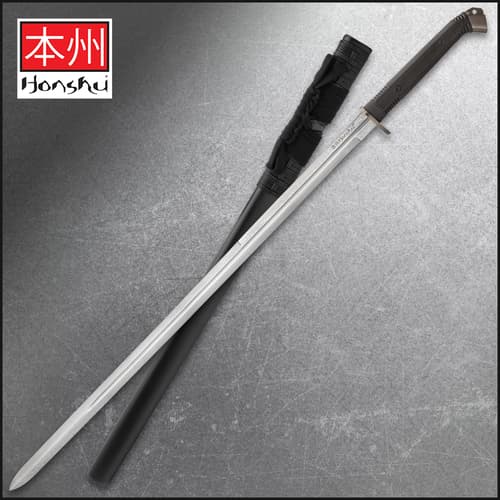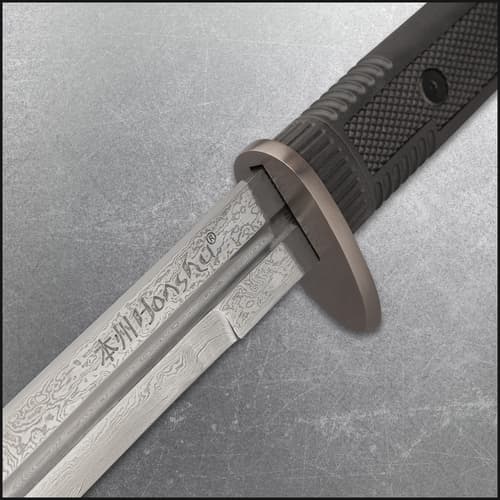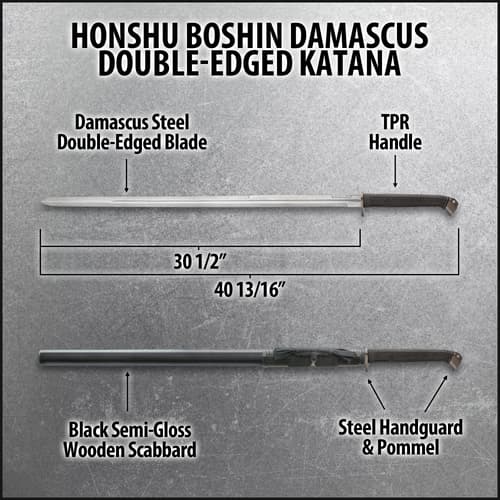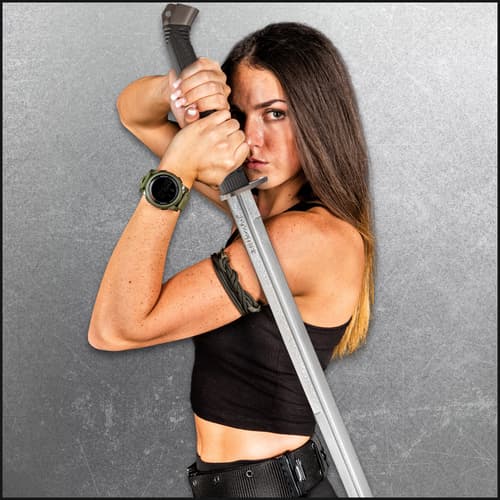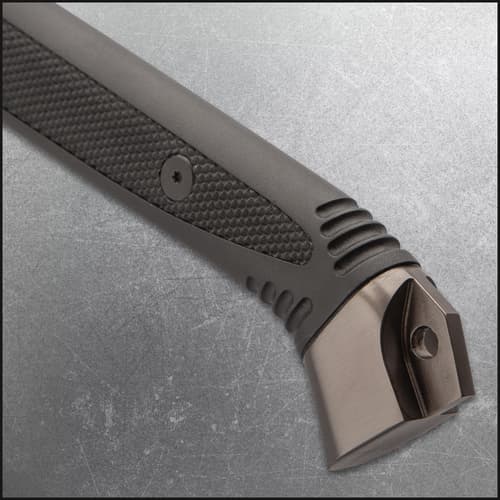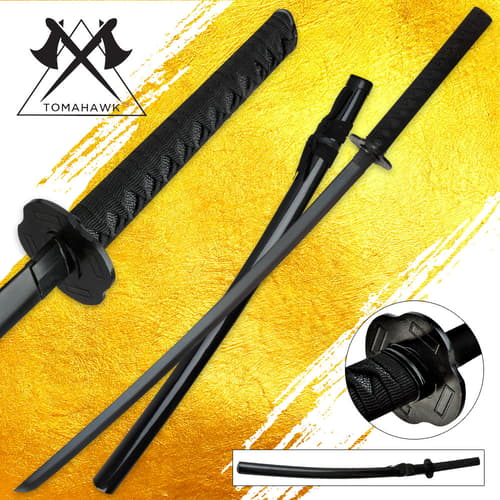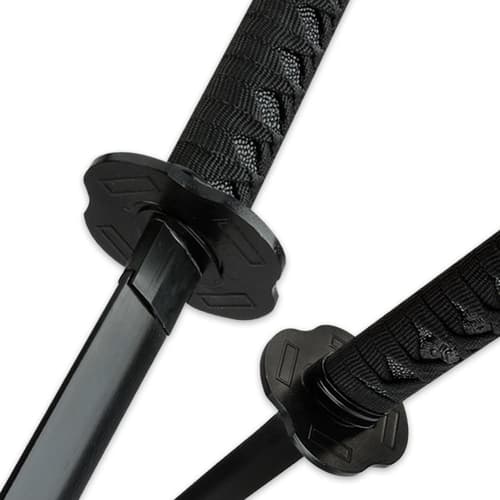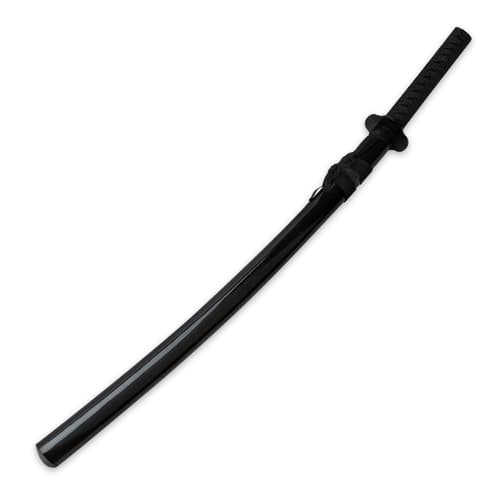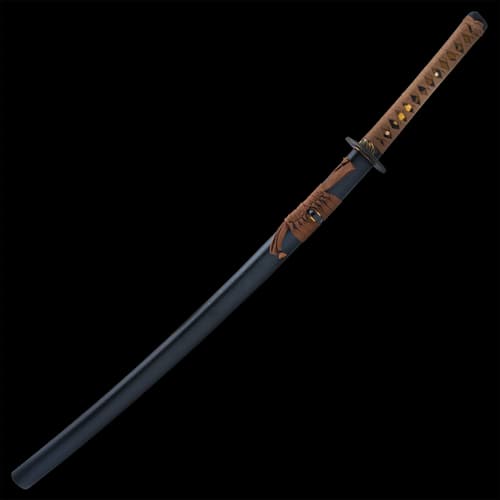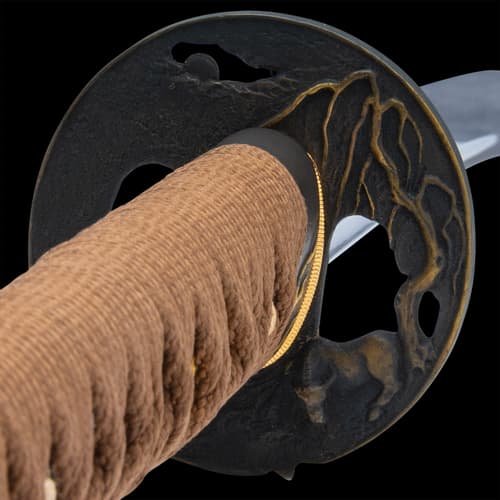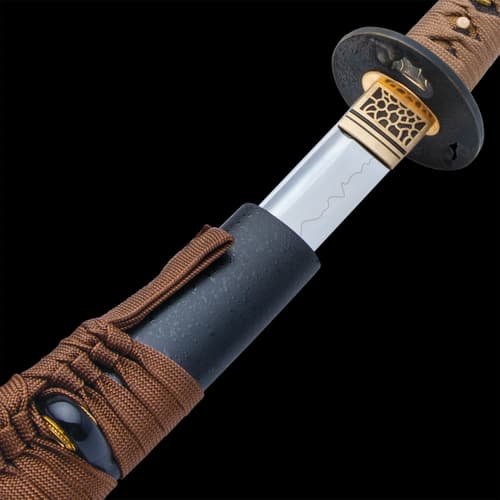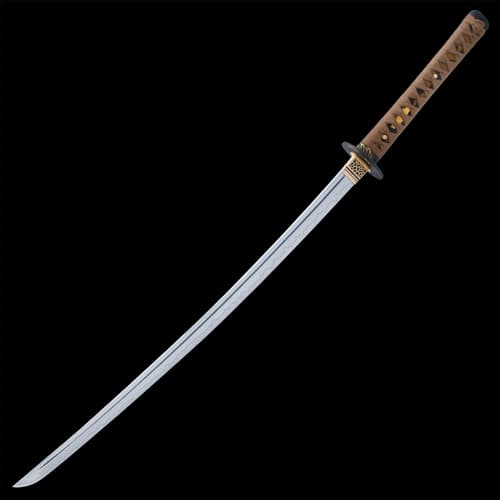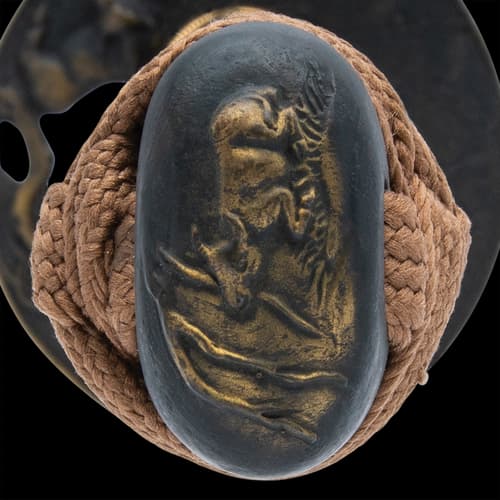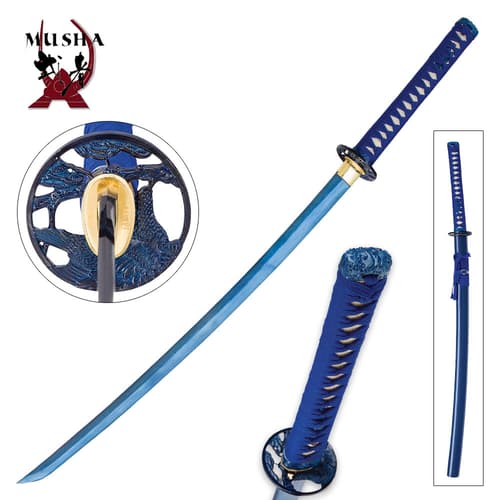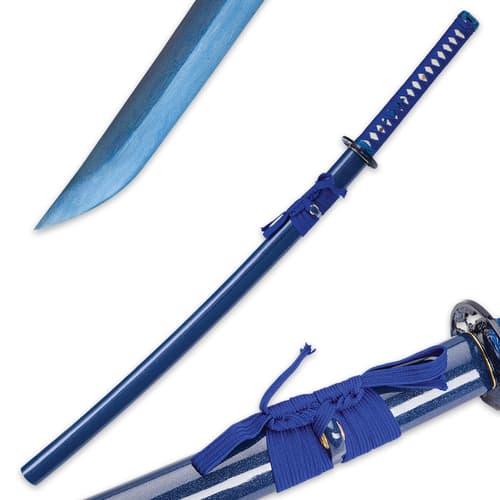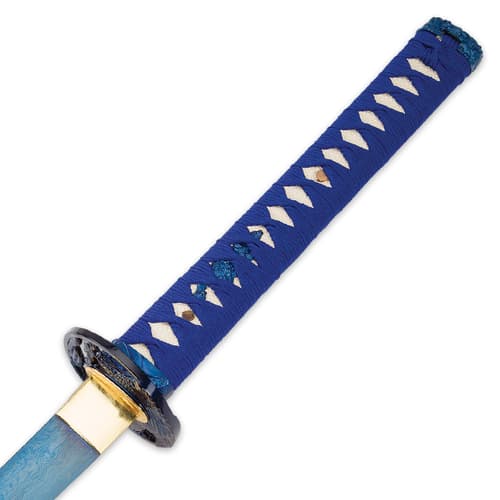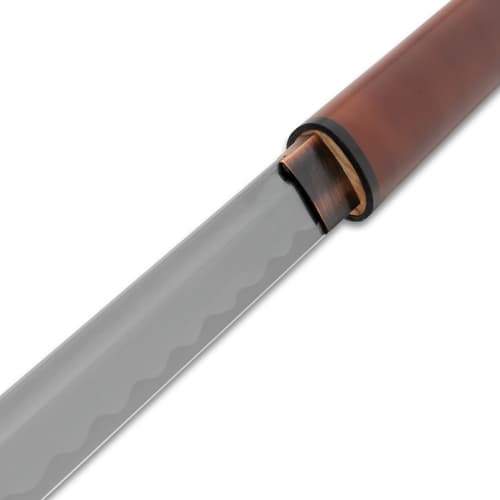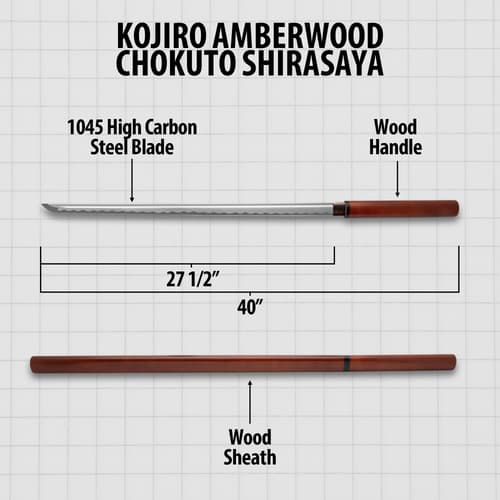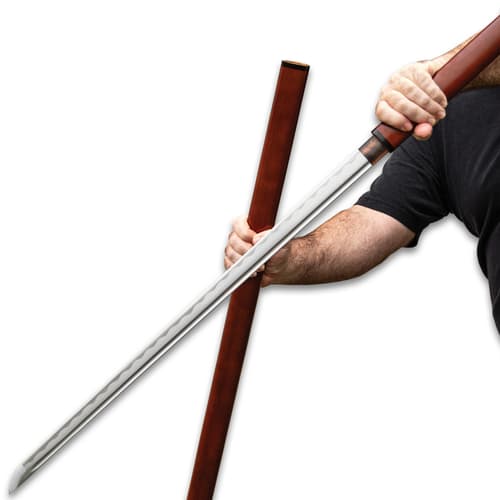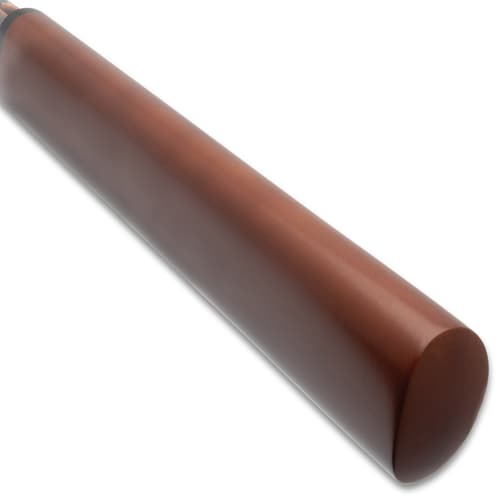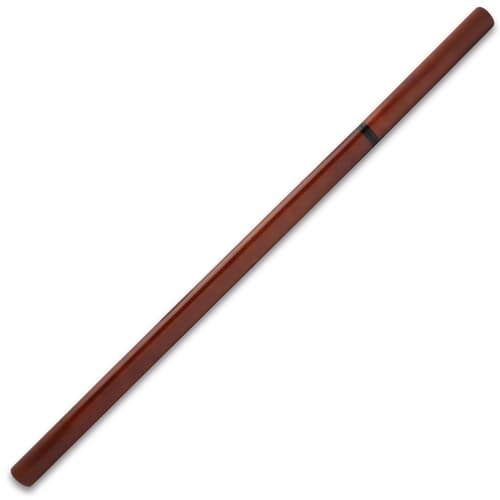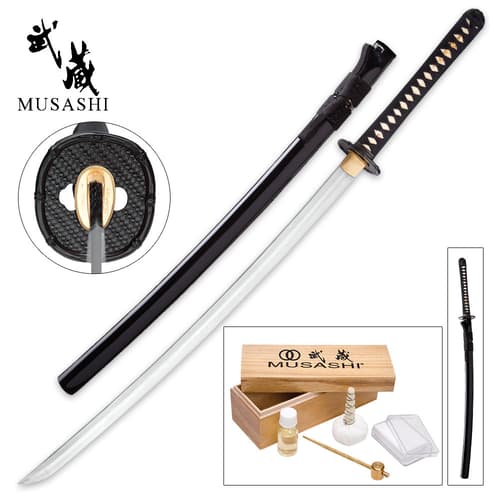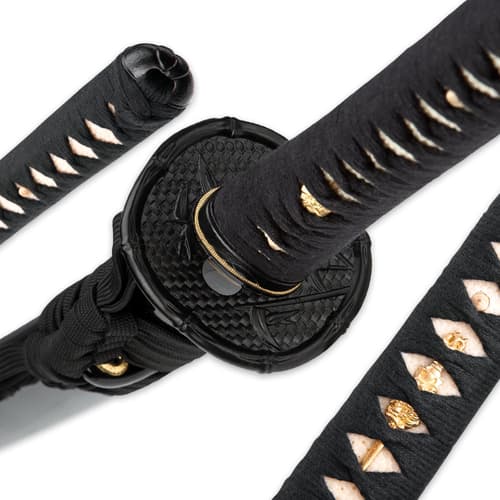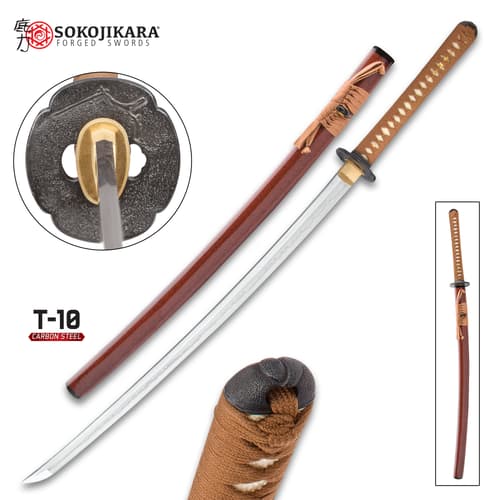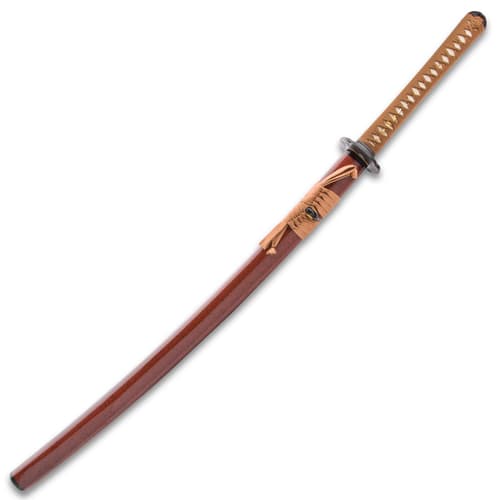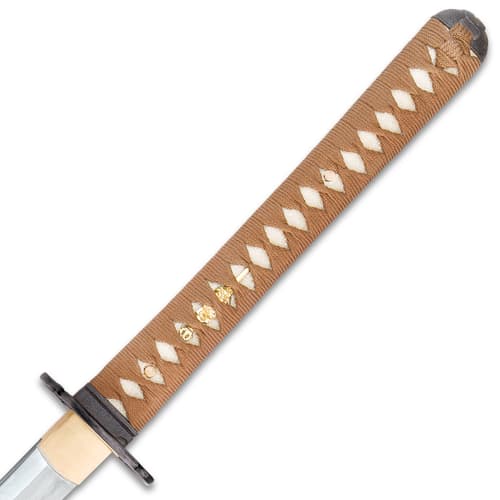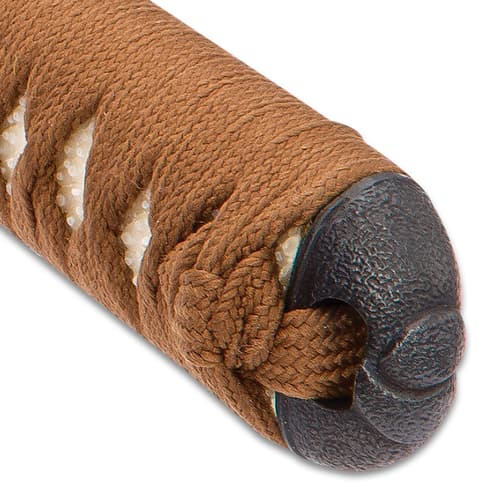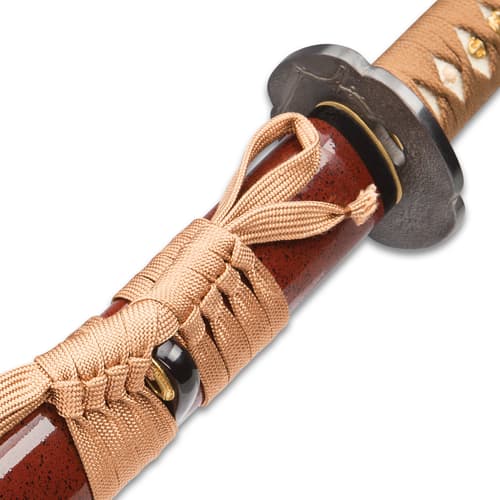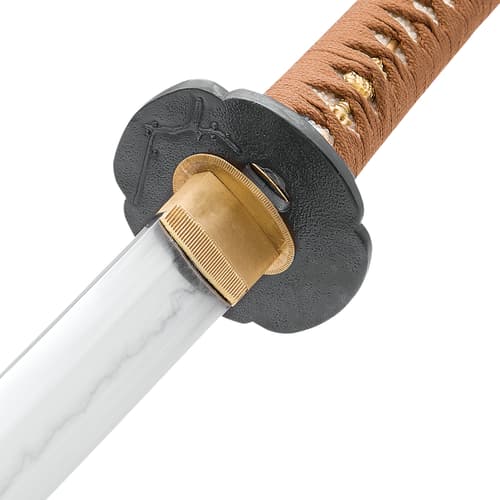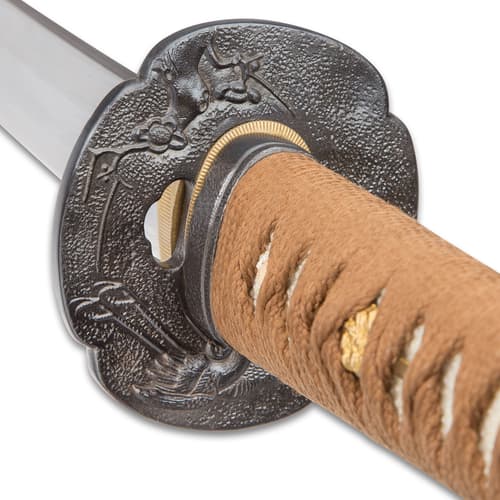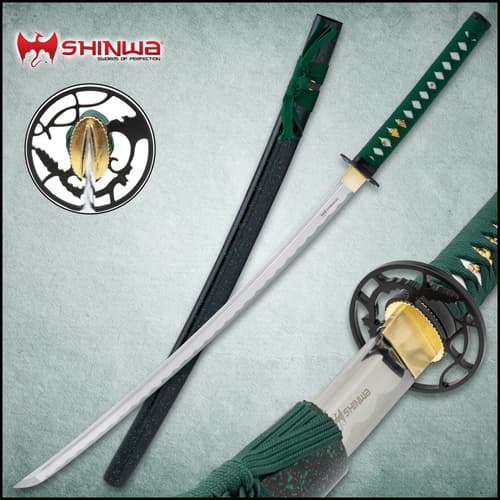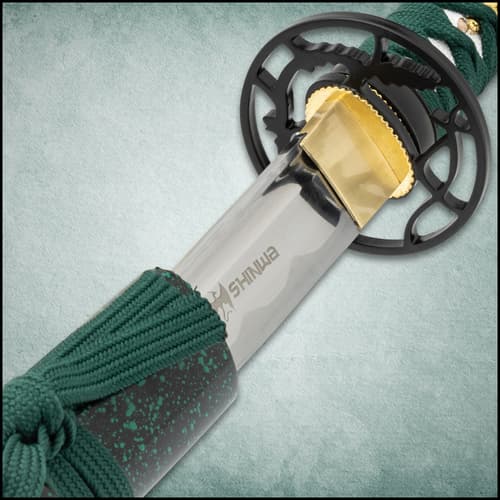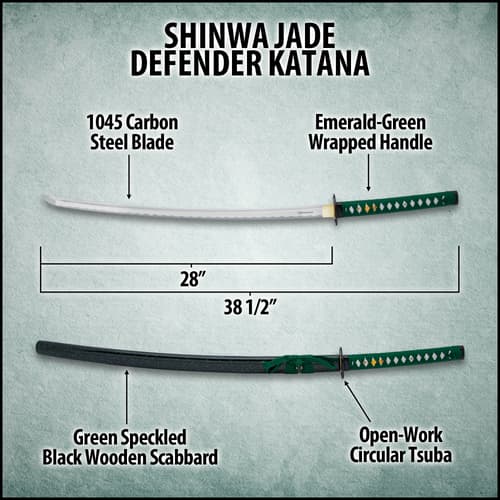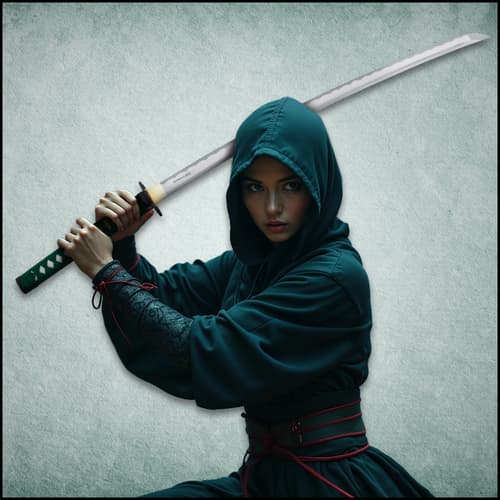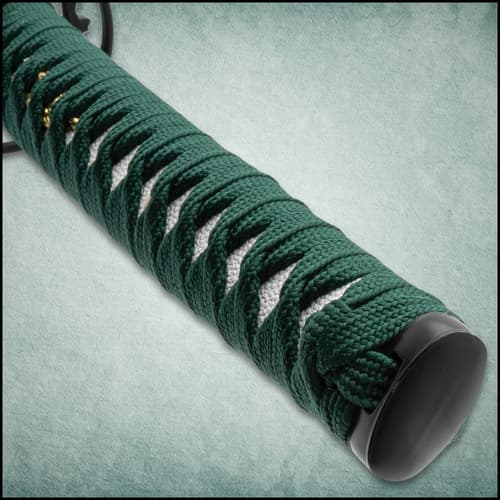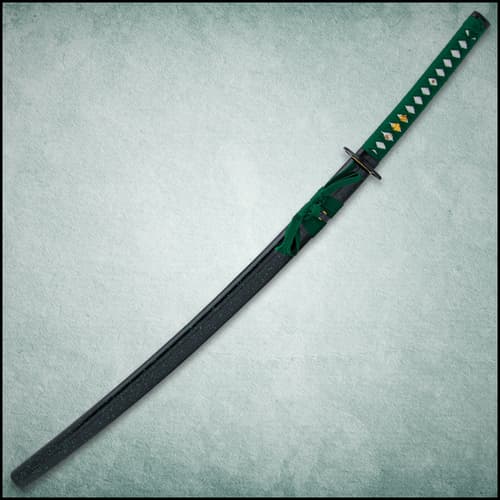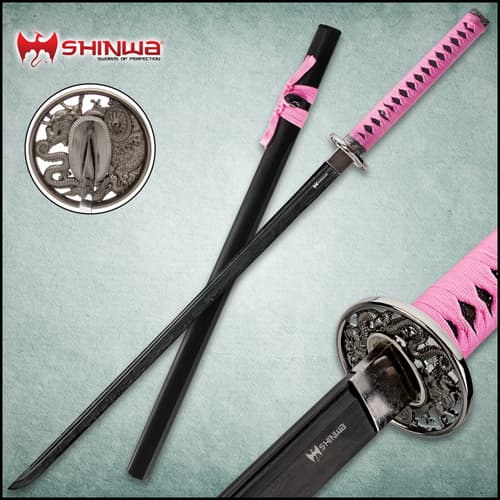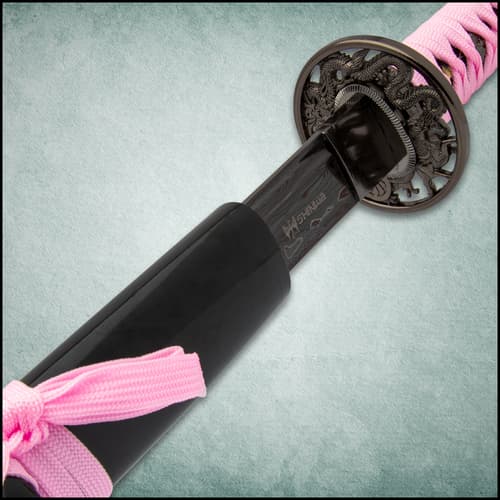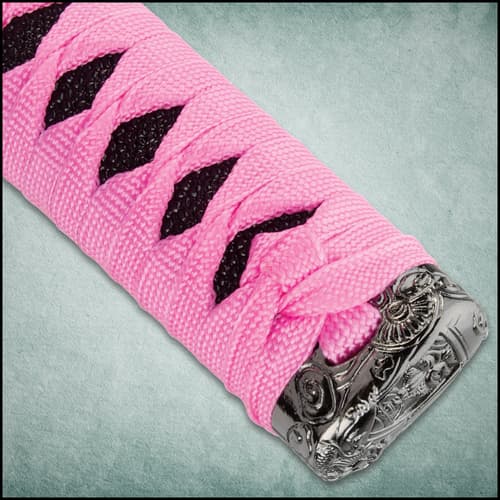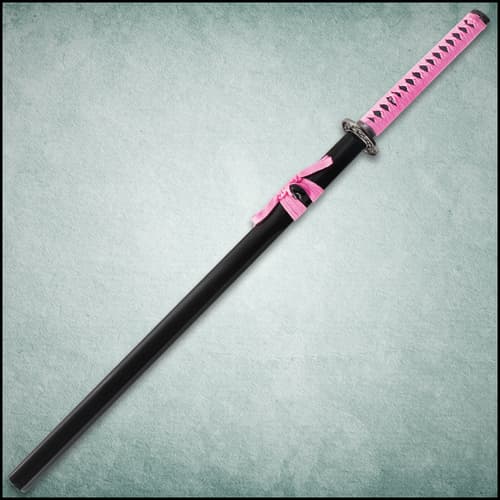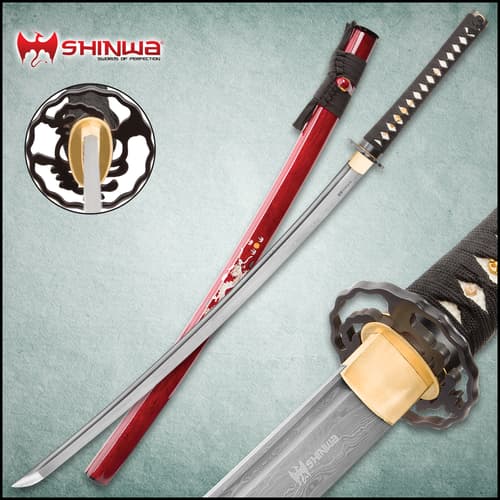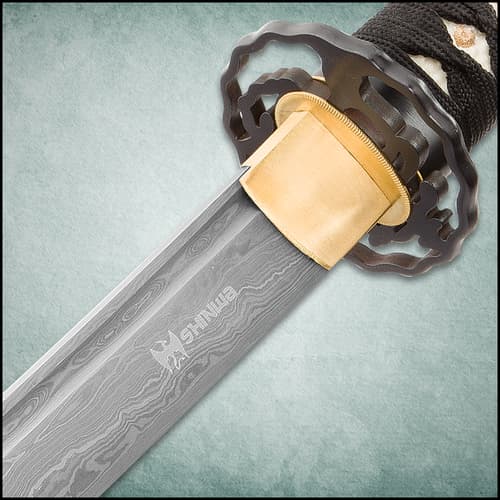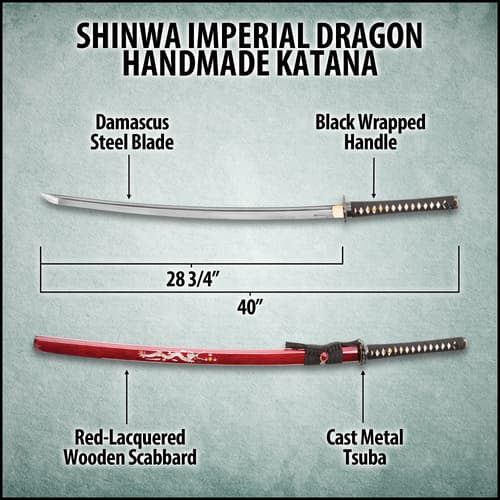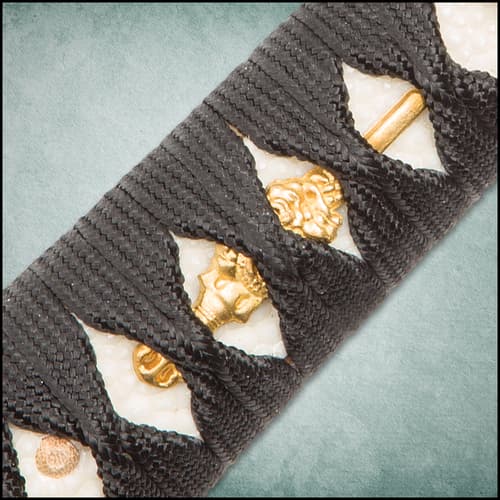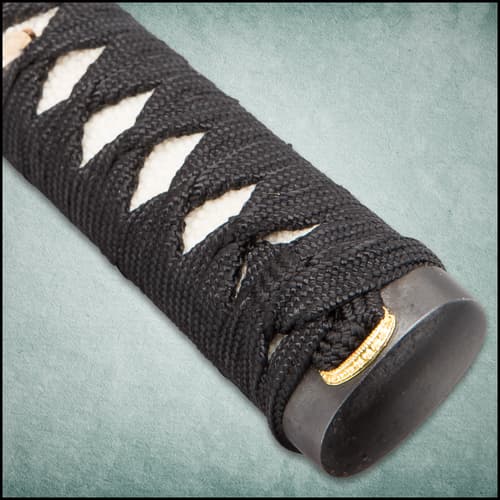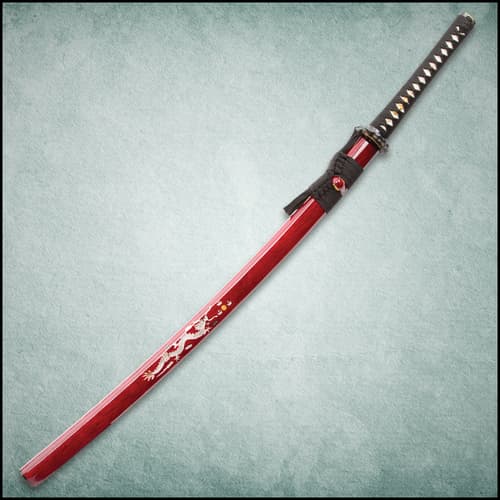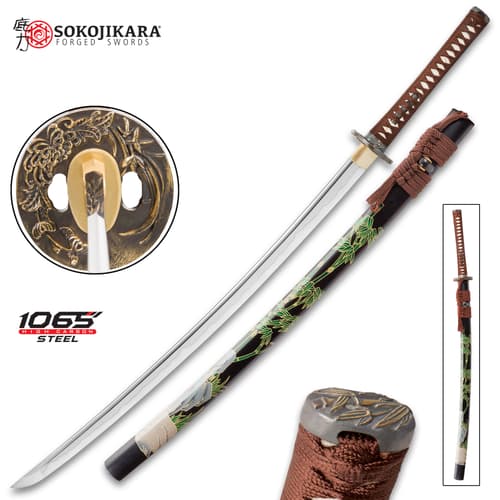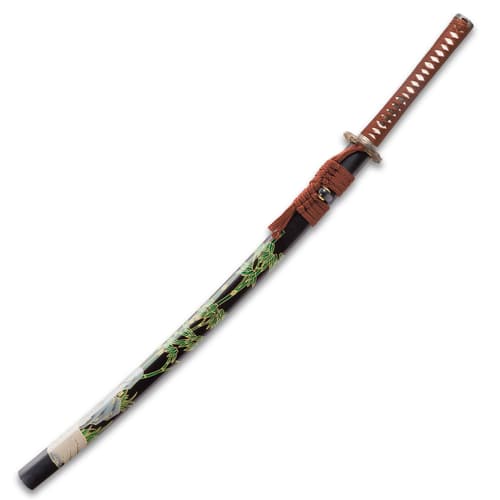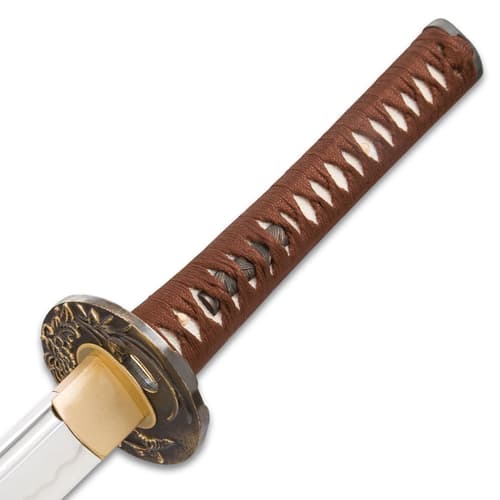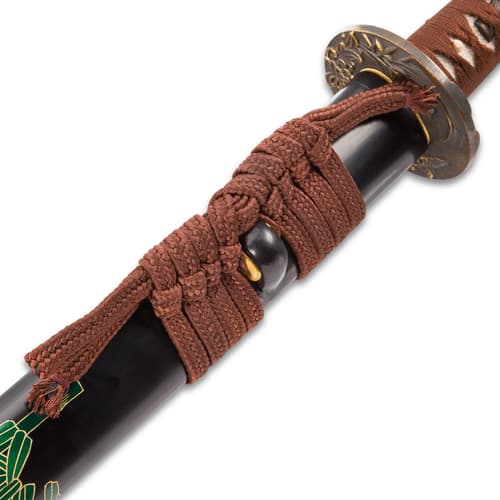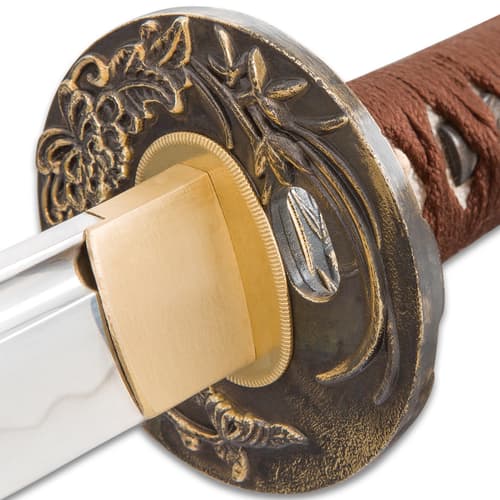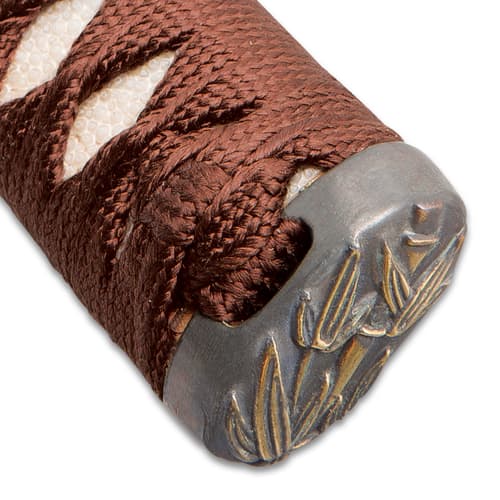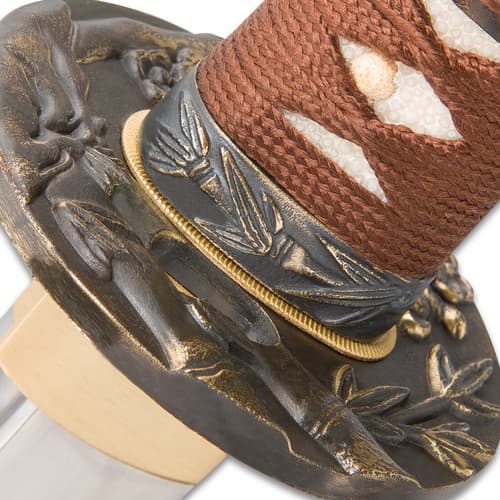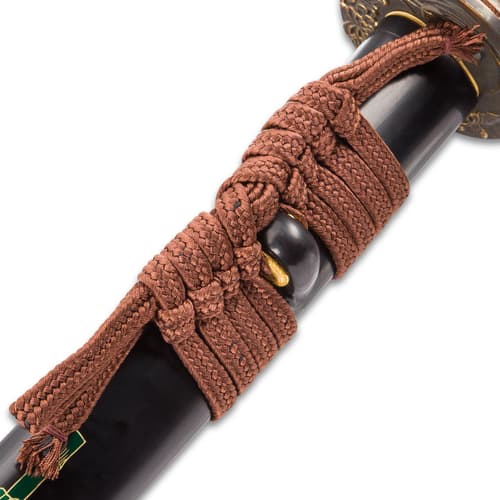Japanese Katanas
151 Results
$39.99
47052
Honshu Boshin Damascus Double Edge Sword - 40 13/16" overall, textured TPR handle, black wooden scabbard
USD
98
Honshu
Swords
Japanese Swords
Japanese Katanas
CL3
Category L3
199.99
29748
Black Emperor Katana Sword With Scabbard
USD
99
Tomahawk
Swords
Japanese Swords
Japanese Katanas
CL3
Category L3
49.99
$179.98
Price reduced from
$296.99
to
36728
Musha Hand-forged Blue Damascus Samurai Sword
USD
101
TrueSwords
Swords
Japanese Swords
Japanese Katanas
CL3
Category L3
114.99
52696
Kojiro Amberwood Chokuto Shirasaya
USD
102
TrueSwords
New
CL3
Category L3
79.99
36735
Musashi Woven Bamboo Samurai Sword - Hand-Forged
USD
103
Musashi
Swords
Japanese Swords
T10 Steel Swords
CL3
Category L3
272.99
$221.98
Price reduced from
$302.99
to
$69.99
$119.99
Price reduced from
$194.99
to
$189.98
Price reduced from
$325.99
to
$366.99
JAPANESE KATANA FAQS
- What is a katana?
The katana is a Japanese sword used by Samurai, an aristocratic warrior class in feudal Japan. It has a curved, single-edged blade that is slender and a square or circular guard. The handle is long and traditionally wrapped in rayskin and then a "braid" of silk or cotton. The blade is sheathed in a scabbard, which is traditionally made of lacquered wood. This weapon was used for slashing and stabbing motions in combat, not necessarily for blocking or clashing. - What should I look for when buying a katana?
The first thing that needs to be considered is whether the sword is for display or functional use. Are you looking for a sword to use or just as a decorative item to wear or display? Once you decide on the purpose, you can explore various designs and ornamentation to find one that fits your personality, style, and budget. - What is that wavy line running down my blade?
Also known as the hamon, it’s the visual divide between the harder and softer metal of the blade. A katana’s blade needs to have a harder edge for retention and a softer spine for flexibility. This is achieved by having the two parts of the blade cool at different speeds during the forging process. - How do I take care of my katana?
Having a regular cleaning routine is key to maintaining your katana. You can purchase a traditional sword cleaning kit that contains everything you need. There are three steps: removing oil, polishing the blade, and oiling the blade. Using a sheet of rice paper from the kit or a soft cotton cloth, remove any oil from the previous maintenance. Tap the powder ball lightly against the blade about every two inches along its length. Use a fresh piece of rice paper to rub the powder over the blade, polishing it until both sides are polished and the powder is removed. Apply a few drops of oil along the blade on each side and spread it evenly with a fresh piece of rice paper. - What’s the difference between a katana and a wakizashi?
Samurai warriors typically carried two swords as part of their dress. The katana was their primary weapon for battle, while the wakizashi was used for close-quarters combat. The wakizashi is built like the katana but is shorter in length, serving as a companion sword.



